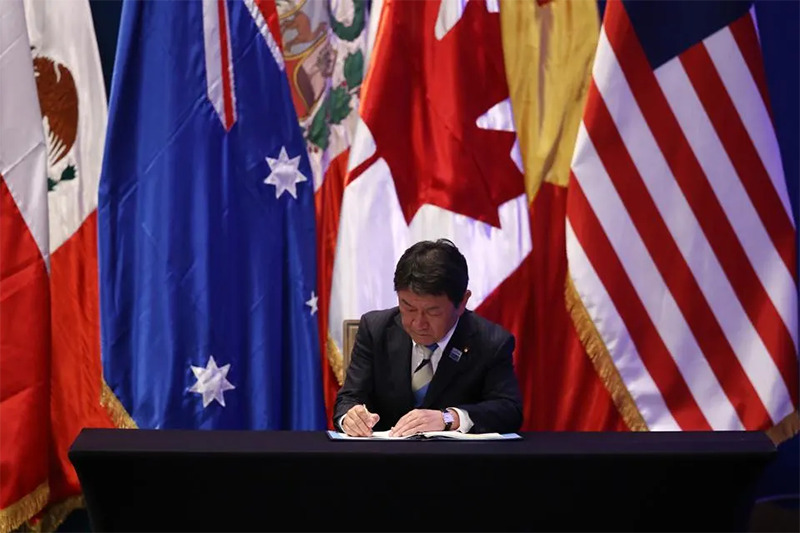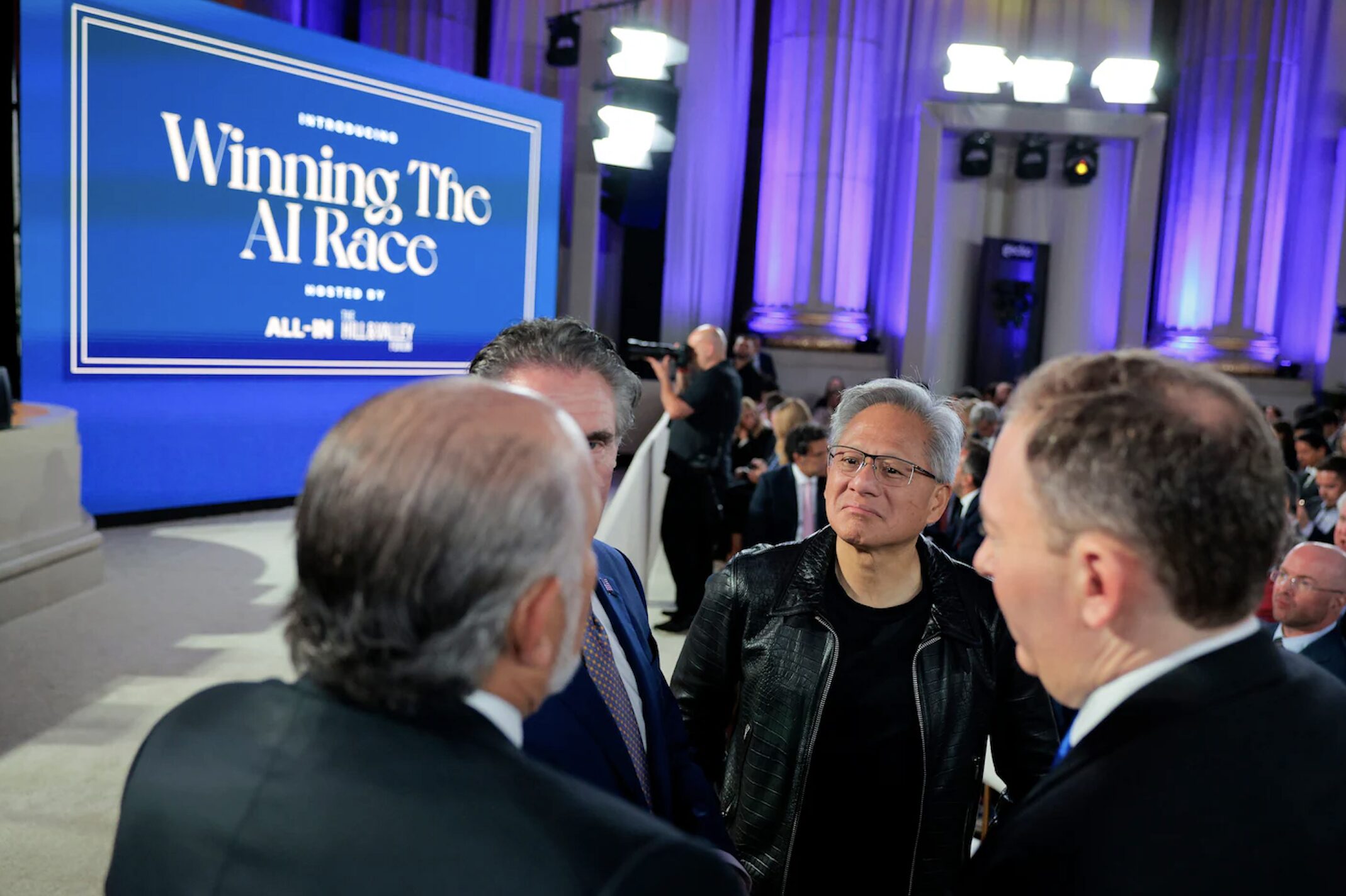
Dr. Sanjay Gupta: Why Haven’t We Cured the Common Cold?
The average person gets two to four colds a year. With all the missed school and work, that adds up to an economic impact of…
Thought Leader: Sanjay Gupta

This piece is written by WWSG exclusive thought leader, Dr. Evan Feigenbaum.
To listen to American politicians, the world’s most dynamic region is either Washington’s or Beijing’s to win. And this straightforward binary—America’s Asia or China’s Asia—has shaped strategic thinking in the American political and strategic class for nearly a decade.
Just take former President Barack Obama, who nicely encapsulated this view in a 2015 interview with The Wall Street Journal’s Washington editor Jerry Seib. Asked to make the case for America’s participation in the Trans-Pacific Partnership trade pact, Obama bluntly told Seib: “If we don’t write the rules, China will write the rules out in that region.”
But Cold War style bipolarity just doesn’t capture the realities facing business in a region of 4.8 billion people and 2.2 billion middle class consumers who, according to World Data Lab, will comprise more than half of global consumer spending by 2032.
Asia is filled with large, capable, self-interested powers. And increasingly, without looking to either Washington or Beijing, these players are setting diverse and sometimes competing rules on the market and regulatory matters that affect business.
One example is the negotiation of major trade pacts in goods and services. Another is the governance of cross-border data transfers. Still another is standard setting for the digital economy—for example, for online authentication and data access control. And in emerging industries, like the governance of digital assets and cryptocurrencies, fragmented rules prevail while Chinese and American regulators sometimes even lag their peers.
All this creates an inherent collision between the strategic narratives so beloved of our politicians and the market realities facing those who must actually run a business or trade assets. Savvy CEOs will need diverse strategies—adapted to many rules, set by many Asian players, in many and increasingly varied ways.
Pull Obama’s thread and Asia has just three probable futures. It can run on “American” or “Chinese” rules, as Obama told Seib. Or it can become bipolar, with countries signing up for Washington’s or Beijing’s preferred rules and then herding into blocs that rhyme with the Cold War, when much of the world split into two competing camps.
This narrative is not just prevalent but dominant in today’s Washington. And it is even becoming an organizing principle for prescriptions to reshape economic order.
For example, in aiming to “counter Beijing’s mercantilism,” some in the American strategic class dismiss as a “dream” the idea of an integrated global market and argue for a bloc-like “subsystem,” with Washington and its allies setting joint rules and then trading mostly with one another.
But in the real world, this “geostrategic” approach to markets is already bumping up against three stark realities:
Part of the issue is that Washington and Beijing are strategic narcissists. Often, they refract rule making through the prism of their own parochial strategic competition while third countries pursue interests of their own.
Asia is chockablock with sizable, capable countries—large markets with pronounced political and developmental goals that neither depend on nor need Americans and Chinese to set their national standards or even write international rules.
Ironically enough, this includes the very pact Obama predicted would showcase a binary between American or Chinese rules in Asia—the TPP. In 2017, Obama’s successor, President Donald Trump, withdrew from the TPP negotiations. So if Obama had been correct, China should have been expected to fill the vacuum. Instead, the eleven remaining countries joined hands, completed negotiations, and concluded their agreement with neither the United States nor China in the room.
And this is hardly the only such example. In Asia—a dynamic and exciting market that will comprise roughly 60 percent of global growth this year, according to the International Monetary Fund—governments are challenging Washington and Beijing to join them, rather than just the other way around.
Consider another pact—the Digital Economy Partnership Agreement. It aims to set digital rules in Asia but was birthed by Singapore, New Zealand, and Chile, not China or the United States. These three first movers framed an agreement and then invited others to join them.
Indeed, the phenomenon of a handful of ambitious first movers, not the dominant powers, driving fresh ideas has a storied history in Asia. And generally speaking, this has not coincided with Washington’s preferences or initial perception of its strategic interest.
For example, in the 1990s, Japan proposed an Asian Monetary Fund, although Tokyo’s idea was then squashed amid American objections. Even the TPP wasn’t America’s, much less China’s, idea. It emerged from a 2005 agreement among tiny Brunei, faraway Chile, remote New Zealand, and enterprising Singapore—four countries that moved jointly to pursue trade liberalization when the dream of a Free Trade Area of the Asia-Pacific stalled out.
It is hard now, in any case, to imagine the geostrategists’ dreams of an economic bloc in Asia when the major democracies aren’t even on the same page.
One glaring example is data, so essential to nearly every industry and service. Multinational firms seek to move data across borders yet rules around both open data and cross-border data vary widely from country to country, including among Asia’s democracies.
One issue is data localization. In South Korea and India, for instance, there have been strong impulses to require foreign firms to store data locally. And in Korea especially, that push for localization has been fueled by a concomitant desire to protect and bolster domestic champions against foreign competition.
K.S. Park, a Korean lawyer, argues that some in Seoul want to require that servers and data be stored in Korea so that the government can “ensure equality of regulation and hence fair competition.” But, Park adds wryly, localization both violates some of Korea’s international commitments and puts Korea at odds with other big economies including its democratic allies.
India, too, has opted for a distinctively Indian approach, having rejected a plurilateral push within the G20 by its strategic partner Japan in 2019. India’s way with data turns heavily on a perceived national interest in data sovereignty. It is less laissez faire than the American approach and reflects a long-standing debate on localization. It seeks to empower both Indian regulators and firms to harness data domestically, in part to protect against and regulate concerns about the perceived predations of foreign multinational tech players.
This is now encapsulated in India’s landmark 2023 law on digital personal data protection. After years of to and fro, the Act is quite liberal in permitting data flows across borders. But as Anirudh Burman notes, “many Indian sectoral regulators, like the Reserve Bank of India, do impose localization requirements” alongside “the progressive adoption of localization by other regulators” that could undermine the progressive intent of the Act.
Democratic fragmentation is especially salient in emerging industries like digital assets, where markets, mining, the use of crypto as legal tender and for payments, and the roles of banks and regulators reflect a hodgepodge of diverse approaches, principles, and regulatory frameworks.
Japan, Singapore, and Thailand have comparatively open crypto regimes while Malaysia and Indonesia discourage their use as legal tender and for payments. South Korea positively overflows with crypto enthusiasts but regulates digital assets strictly.
In industry after industry, bloc-like arrangements are certain to prove elusive.
Politicians and geostrategists who played too many games of Risk and Stratego as kids hanker for the certitudes of the Cold War. But firms and markets will need to prepare for a different and more diverse future. The touchstone of their success will be to expect and then prepare for a much more fragmented future in a dynamic Asia.
Dr. Sanjay Gupta: Why Haven’t We Cured the Common Cold?
The average person gets two to four colds a year. With all the missed school and work, that adds up to an economic impact of…
Thought Leader: Sanjay Gupta
Erika Ayers Badan: How to Keep Creativity Alive
Hi! Ever felt like you’re on a Disney ride through every big-company headache imaginable? Think lawyers, bankers, finance goons, stale conference rooms, staid conversations and…
Thought Leader: Erika Ayers Badan
Chris Miller: Trump’s Nvidia Chip Decision Lands Hard
In a new article, “Allowing China access to advanced semiconductors puts national security and U.S. AI industry at risk,”Chris Miller — author of Chip War…
Thought Leader: Chris Miller

